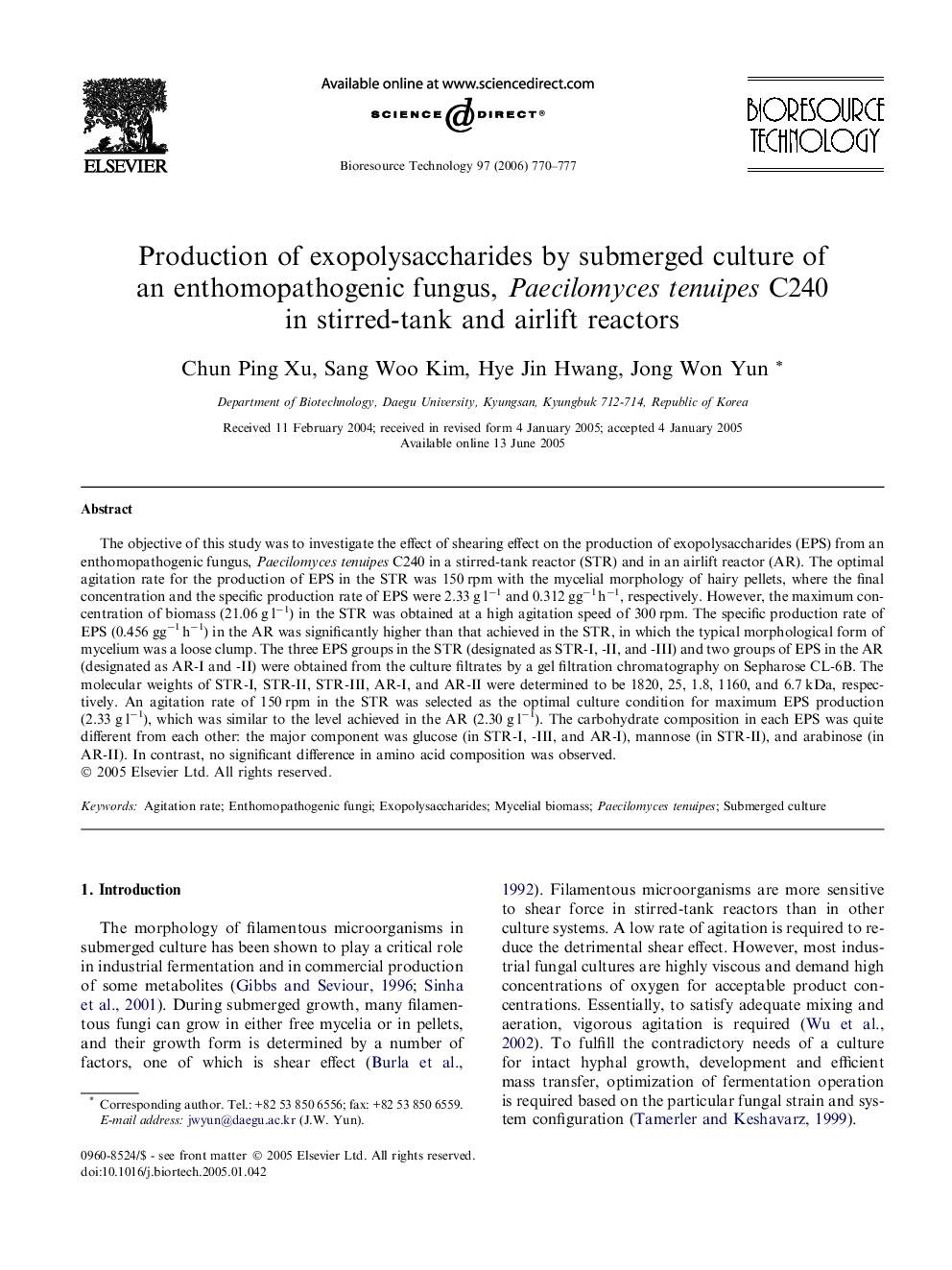| Article ID | Journal | Published Year | Pages | File Type |
|---|---|---|---|---|
| 685643 | Bioresource Technology | 2006 | 8 Pages |
The objective of this study was to investigate the effect of shearing effect on the production of exopolysaccharides (EPS) from an enthomopathogenic fungus, Paecilomyces tenuipes C240 in a stirred-tank reactor (STR) and in an airlift reactor (AR). The optimal agitation rate for the production of EPS in the STR was 150 rpm with the mycelial morphology of hairy pellets, where the final concentration and the specific production rate of EPS were 2.33 g l−1 and 0.312 gg−1 h−1, respectively. However, the maximum concentration of biomass (21.06 g l−1) in the STR was obtained at a high agitation speed of 300 rpm. The specific production rate of EPS (0.456 gg−1 h−1) in the AR was significantly higher than that achieved in the STR, in which the typical morphological form of mycelium was a loose clump. The three EPS groups in the STR (designated as STR-I, -II, and -III) and two groups of EPS in the AR (designated as AR-I and -II) were obtained from the culture filtrates by a gel filtration chromatography on Sepharose CL-6B. The molecular weights of STR-I, STR-II, STR-III, AR-I, and AR-II were determined to be 1820, 25, 1.8, 1160, and 6.7 kDa, respectively. An agitation rate of 150 rpm in the STR was selected as the optimal culture condition for maximum EPS production (2.33 g l−1), which was similar to the level achieved in the AR (2.30 g l−1). The carbohydrate composition in each EPS was quite different from each other: the major component was glucose (in STR-I, -III, and AR-I), mannose (in STR-II), and arabinose (in AR-II). In contrast, no significant difference in amino acid composition was observed.
